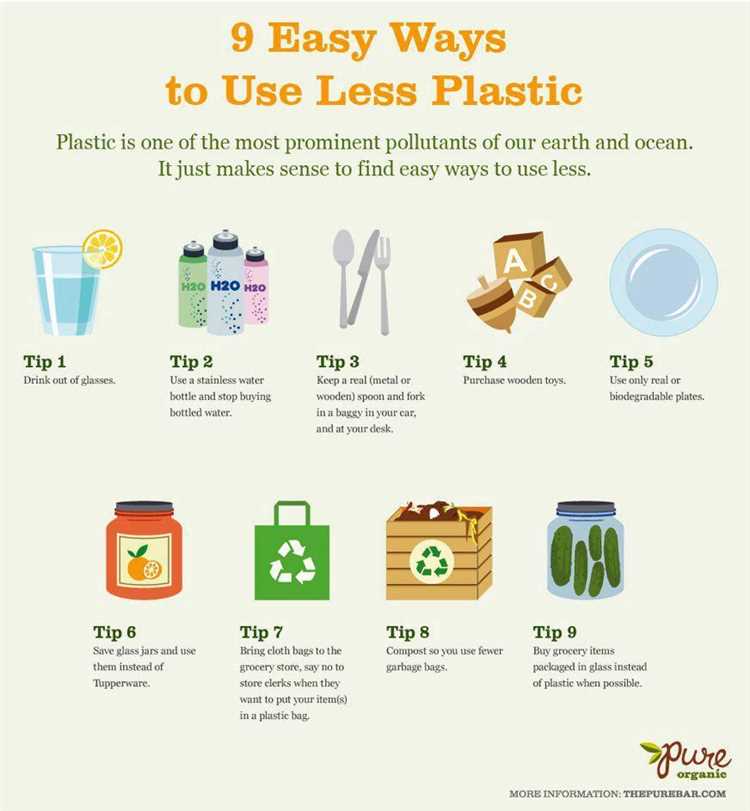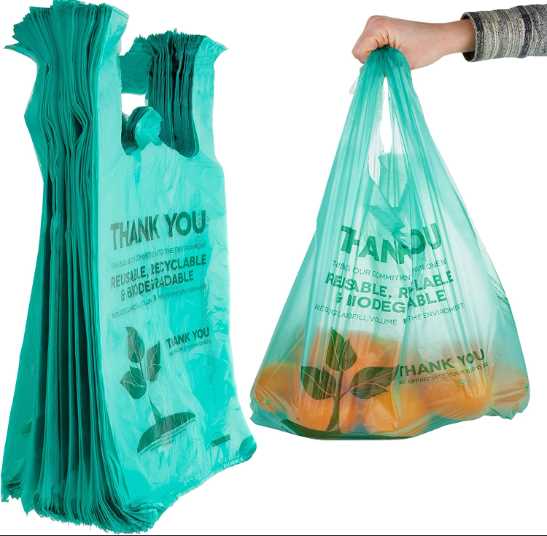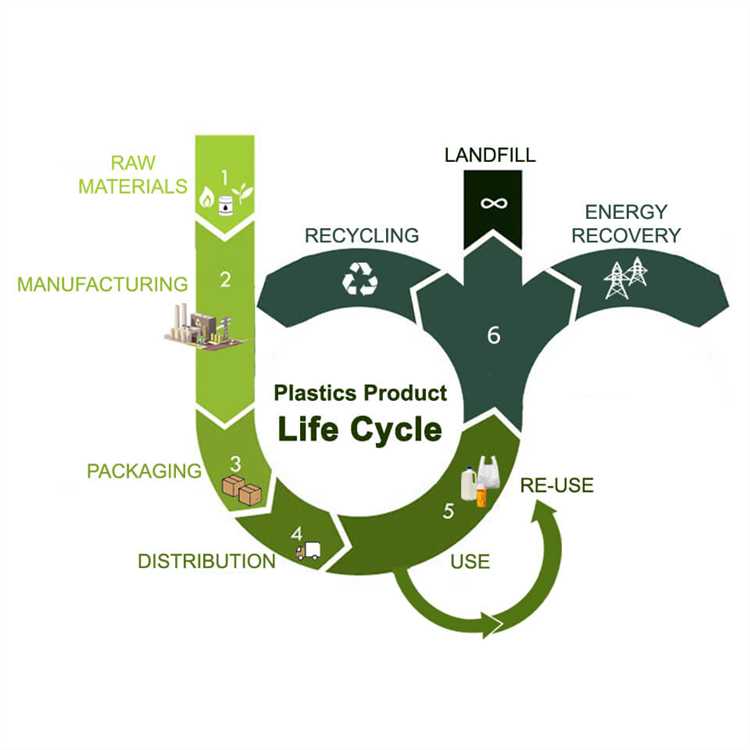
Plastic is a material that has revolutionized the way we live, but its environmental impact cannot be ignored. However, not all plastics are created equal when it comes to their eco-friendliness. There are certain types of plastic that are more sustainable and have a lower carbon footprint compared to others. By understanding and choosing these types of plastic, we can make a positive difference in reducing the environmental harm caused by plastic waste.
One of the most eco-friendly types of plastic is biodegradable plastic. Unlike traditional plastics that can take hundreds of years to decompose, biodegradable plastics are designed to break down much faster, usually within a few months to a few years. These plastics are often made from natural materials such as corn starch, sugarcane, or algae, and they can be composted along with organic waste. By choosing biodegradable plastics, we can significantly reduce the amount of plastic waste that ends up in landfills or pollutes our oceans.
Another eco-friendly option is recycled plastic, also known as post-consumer recycled (PCR) plastic. This type of plastic is made from recycled plastic waste, such as plastic bottles or containers, that would otherwise end up in the landfill. By recycling and reusing plastic, we can conserve natural resources and reduce energy consumption and greenhouse gas emissions associated with the production of new plastic. Using products made from recycled plastic helps close the loop and minimize the environmental impact of plastic waste.
Finally, another type of plastic that is gaining popularity in the eco-friendly movement is plant-based or bioplastic. Plant-based plastics are made from renewable resources such as corn, sugarcane, or even algae. These plastics have a lower carbon footprint compared to traditional plastics derived from fossil fuels, as they require less energy to produce and emit fewer greenhouse gases. Furthermore, some bioplastics are also biodegradable, making them even more environmentally friendly. By supporting the use of plant-based plastics, we can promote a more sustainable and circular economy.
As individuals and businesses, we have the power to make conscious choices when it comes to plastic consumption. By opting for biodegradable plastic, recycled plastic, or plant-based plastics, we can contribute to a more sustainable future and reduce the negative impact of plastic on our planet. Together, let’s discover and embrace the most eco-friendly types of plastic for a greener tomorrow.
- The Importance of Eco-Friendly Plastics
- Reducing Plastic Waste
- Protecting Wildlife and Marine Life
- Types of Eco-Friendly Plastics
- Biodegradable Plastics
- Advantages of Biodegradable Plastics
- Types of Biodegradable Plastics
- Compostable Plastics
- Advantages of Compostable Plastics
- Disadvantages of Compostable Plastics
- Recycled Plastics
- 1. Recycled High-Density Polyethylene (rHDPE)
- 2. Recycled Polyethylene Terephthalate (rPET)
- Plant-Based Plastics
- The Advantages of Plant-Based Plastics
- The Challenges of Plant-Based Plastics
- Ocean Plastics
- The Great Pacific Garbage Patch
- The Impact on Marine Life
- Advantages of Eco-Friendly Plastic
- 1. Biodegradability
- 2. Renewable Sources
- Q&A:
- What are some eco-friendly types of plastic?
- Are these eco-friendly plastics biodegradable?
- Are there any other benefits of using eco-friendly plastics?
- Can eco-friendly plastics be recycled?
- How can I identify eco-friendly plastics?
- What is the significance of finding eco-friendly types of plastic?
- Are all types of plastic harmful to the environment?
The Importance of Eco-Friendly Plastics

Plastics are widely used in our everyday lives, from packaging materials to household items and even in the construction industry. However, the environmental impact of plastics, especially single-use plastics, has raised concerns worldwide. As a result, there is a growing need for eco-friendly plastics that can help mitigate the negative impacts on the environment.
Reducing Plastic Waste
Eco-friendly plastics play a crucial role in reducing plastic waste and its harmful effects on the environment. Traditional plastics can take hundreds of years to decompose, leading to overflowing landfills and pollution of oceans and other natural habitats. In contrast, eco-friendly plastics are designed to break down more quickly, reducing the amount of plastic waste that ends up in landfills and the natural environment.
Additionally, some eco-friendly plastics are made from sustainable and renewable resources such as plant-based materials. This helps to reduce the dependency on fossil fuels, which are used in the production of traditional plastics. By using eco-friendly plastics, we can lessen the demand for fossil fuels and contribute to the overall reduction of greenhouse gas emissions.
Protecting Wildlife and Marine Life
The improper disposal of plastics poses a significant threat to wildlife and marine life. Animals can easily mistake plastic waste for food, leading to ingestion and potential harm or death. Marine life, in particular, is heavily affected by plastic pollution as discarded plastics can entangle and suffocate marine animals, as well as disrupt their natural habitats.
Eco-friendly plastics offer a solution to minimize these adverse effects on wildlife and marine life. By utilizing biodegradable and compostable plastics, we can reduce the risk of harm to animals and help protect their natural ecosystems.
It is essential for individuals, businesses, and governments to promote the use and development of eco-friendly plastics. By choosing these alternative materials, we can contribute to a cleaner and healthier environment for future generations.
Types of Eco-Friendly Plastics
When it comes to eco-friendly plastics, there are several types that are gaining popularity due to their sustainable nature. These plastics are designed to have a minimal impact on the environment, as they are made from renewable resources, biodegradable materials, or recycled plastics.
Here are some of the most common types of eco-friendly plastics:
- Bioplastics: Made from plant-based materials such as corn, sugarcane, or algae, bioplastics are a sustainable alternative to traditional plastics. They are biodegradable and can be broken down by microorganisms, reducing their impact on the environment.
- Recycled plastics: These plastics are made from post-consumer or post-industrial waste materials. By recycling plastic waste, we can reduce the demand for new plastic production and minimize the amount of plastic ending up in landfills or oceans.
- Polylactic Acid (PLA): PLA is a bio-based plastic made from fermented plant sugars. It is compostable and can be broken down into carbon dioxide and water in industrial composting facilities. PLA is commonly used for packaging, disposable cutlery, and food containers.
- Polyhydroxyalkanoates (PHA): PHA is a type of biodegradable plastic that is produced by microorganisms. It is made from renewable resources such as vegetable oils or sugars and can break down in both aerobic and anaerobic environments. PHA can be used for various applications, including packaging materials and medical products.
These eco-friendly plastics are just a few examples of how innovative solutions are being developed to address the global plastic pollution problem. By choosing these sustainable alternatives, we can contribute to a more environmentally friendly future.
Biodegradable Plastics
Biodegradable plastics are a type of plastic that can break down naturally and decompose over time. Unlike traditional plastics that can take hundreds of years to degrade, biodegradable plastics are designed to reduce the negative environmental impact.
Advantages of Biodegradable Plastics
Biodegradable plastics offer several advantages over traditional plastics:
1. Environmental Impact: Biodegradable plastics minimize the impact on landfills and reduce the release of harmful gases during decomposition. They help to address the problem of plastic waste accumulation and contribute to a cleaner environment.
2. Renewable Materials: Many biodegradable plastics are made from renewable materials such as plant sources, making them more sustainable and reducing the reliance on non-renewable fossil fuels.
3. Versatility: Biodegradable plastics can be manufactured to have similar properties as traditional plastics, making them suitable for various applications. They can be used for packaging, disposable cutlery, agriculture, and more.
Types of Biodegradable Plastics

There are different types of biodegradable plastics available on the market:
1. PLA (Polylactic Acid): PLA is one of the most commonly used biodegradable plastics. It is made from renewable resources such as corn starch or sugarcane and is compostable. PLA is often used for disposable packaging, utensils, and textiles.
2. PHA (Polyhydroxyalkanoates): PHA is a family of biodegradable plastics that are produced by bacteria. They can be generated from various sources, including plant oils and waste organic materials. PHAs have a wide range of applications, including packaging, agriculture, and medical devices.
3. PBAT (Polybutylene Adipate Terephthalate): PBAT is a biodegradable and compostable plastic that is often used in blending with other biodegradable materials to improve their properties. It is commonly found in biodegradable packaging films, bags, and disposable products.
These are just a few examples of the many biodegradable plastics available. The development of new types of biodegradable plastics is ongoing, with researchers and manufacturers continuously working towards improving their performance and reducing their environmental impact.
Compostable Plastics
Compostable plastics are a type of plastic that can break down into natural components such as water, carbon dioxide, and biomass in a composting environment. They are designed to mimic organic materials in their ability to decompose and return to the earth without posing harm to the environment.
Compostable plastics are made from renewable resources, such as corn starch or sugarcane, which are converted into a biopolymer through a process called polymerization. This biopolymer is then used to create a wide range of products, including food packaging, cutlery, bags, and films.
Advantages of Compostable Plastics
There are several advantages to using compostable plastics:
- Reduction of waste: Compostable plastics can be composted along with other organic waste, reducing the amount of plastic that goes to landfills or incinerators.
- Lower carbon footprint: Compostable plastics have a lower carbon footprint compared to traditional plastics made from fossil fuels.
- Support for sustainable agriculture: Compostable plastics are often made from renewable resources, supporting the development of sustainable agriculture.
Disadvantages of Compostable Plastics
While compostable plastics offer many benefits, there are also some drawbacks to consider:
- Limited availability of composting facilities: Composting facilities that accept compostable plastics may not be widely available, making proper disposal a challenge.
- Higher cost: Compostable plastics are generally more expensive to produce than traditional plastics, which can contribute to higher costs for consumers.
- Durability: Compostable plastics may not be as durable as traditional plastics, which can limit their potential applications.
Despite these limitations, compostable plastics are considered a promising solution for reducing plastic waste and transitioning to a more sustainable and eco-friendly plastic industry.
Recycled Plastics
Recycled plastics play a vital role in reducing waste and minimizing the environmental impact of plastic production. By using recycled plastics, we can divert plastic waste from landfills and reduce the energy and resources needed to produce new plastic materials.
There are different types of recycled plastics available, each with its own set of characteristics and benefits. Some commonly used recycled plastics include:
1. Recycled High-Density Polyethylene (rHDPE)
Recycled HDPE is commonly used in various applications such as bottles, containers, and plastic lumber. It is known for its strength, chemical resistance, and durability. Using rHDPE helps conserve energy and water while reducing greenhouse gas emissions and solid waste.
2. Recycled Polyethylene Terephthalate (rPET)
Recycled PET is commonly used for packaging, fibers, and textiles. It is known for its clarity, strength, and barrier properties. By using rPET, we can reduce the demand for virgin PET, which in turn reduces energy consumption and greenhouse gas emissions.
Recycled plastics can be identified by the recycling symbol with a number inside, indicating the type of plastic. However, it is essential to note that not all plastics are easily recyclable, and recycling capabilities may vary by region. Proper recycling practices and infrastructure are necessary for the successful reuse of plastics.
In addition to using recycled plastics, it is vital to reduce plastic consumption and promote the use of sustainable alternatives. By adopting eco-friendly practices and supporting companies that prioritize recycling and waste reduction, we can contribute to a more sustainable future.
| Type of Plastic | Common Applications | Benefits |
|---|---|---|
| Recycled HDPE (rHDPE) | Bottles, containers, plastic lumber | Strength, chemical resistance, energy conservation |
| Recycled PET (rPET) | Packaging, fibers, textiles | Clarity, strength, reduced energy consumption |
Plant-Based Plastics
Plant-based plastics, also known as bioplastics, are a promising alternative to traditional petroleum-based plastics. These types of plastics are derived from natural materials, such as corn, sugarcane, or potatoes, instead of non-renewable fossil fuels.
One of the most commonly used plant-based plastics is PLA (polylactic acid). PLA is made from fermented plant sugars, usually derived from corn or sugarcane. It is biodegradable and compostable, making it a more environmentally friendly choice compared to conventional plastics.
Another type of plant-based plastic is PHA (polyhydroxyalkanoates). PHA is produced by bacteria that convert plant sugars into a polymer. It is versatile and can be used in various applications, including packaging, disposable cutlery, and even medical implants. PHA is biodegradable and marine-safe, making it an excellent choice for reducing plastic pollution.
The Advantages of Plant-Based Plastics
Plant-based plastics offer several advantages over traditional plastics. Firstly, they reduce our dependence on fossil fuels and decrease carbon dioxide emissions, leading to a lower carbon footprint. Additionally, these materials are renewable and can be produced sustainably, helping to preserve natural resources.
Furthermore, plant-based plastics are biodegradable and compostable, meaning they can break down into natural elements over time. This reduces the amount of plastic waste in landfills and oceans, minimizing the negative impact on the environment and wildlife.
The Challenges of Plant-Based Plastics
Despite their benefits, plant-based plastics also face certain challenges. One of the main concerns is the availability of feedstock for production. As the demand for plant-based plastics increases, so does the demand for crops used as raw materials. This raises concerns about competition for agricultural land and potential food shortages.
In addition, the cost of producing plant-based plastics is currently higher than that of traditional plastics. The production process requires specialized equipment and technologies, making it more expensive. However, as technology advances and economies of scale are achieved, the cost is expected to decrease, making plant-based plastics more accessible and affordable.
In conclusion, plant-based plastics are a promising solution to reduce the environmental impact of plastic waste. Their renewable nature, biodegradability, and lower carbon footprint make them an eco-friendly alternative to traditional plastics. With further research and development, plant-based plastics have the potential to revolutionize the industry and contribute to a more sustainable future.
Ocean Plastics
Ocean plastics are a major environmental concern, as they contribute to the pollution and degradation of marine ecosystems. Plastics that end up in the ocean can have devastating effects on marine life, including entanglement and ingestion by marine animals.
One of the main sources of ocean plastics is single-use plastics, such as plastic bottles, bags, and straws, that are not properly disposed of and end up in waterways that eventually lead to the ocean. These types of plastics take hundreds of years to break down, and in the meantime, they can cause significant harm to marine life.
The Great Pacific Garbage Patch
One of the most well-known examples of ocean plastics is the Great Pacific Garbage Patch, which is a massive collection of floating plastic debris located in the North Pacific Ocean. The garbage patch is estimated to be twice the size of Texas and contains an estimated 1.8 trillion pieces of plastic.
The Great Pacific Garbage Patch is formed by ocean currents that converge in the area, trapping and accumulating the plastic debris. The majority of the plastic in the garbage patch comes from land-based sources, but some also comes from ships and fishing gear.
The Impact on Marine Life
Ocean plastics have a devastating impact on marine life. Marine animals can become entangled in plastic debris, which can hinder their movement, cause injury, and even lead to death. Additionally, marine animals often mistake small pieces of plastic for food, which can result in internal injuries, blockages, and malnutrition.
Many marine species are affected by ocean plastics, including sea turtles, seabirds, marine mammals, and fish. The ingestion of plastics by these animals can disrupt their feeding and reproductive habits, decrease their overall health and fitness, and ultimately threaten their survival.
Addressing the issue of ocean plastics requires a combination of efforts, including reducing plastic waste, improving waste management systems, and promoting recycling and the use of eco-friendly alternatives to single-use plastics.
Advantages of Eco-Friendly Plastic
Eco-friendly plastic, also known as biodegradable plastic or bio-based plastic, offers numerous advantages over traditional plastic. These advantages make it a desirable alternative for industries and consumers alike. Here are some of the key advantages of eco-friendly plastic:
1. Biodegradability

Eco-friendly plastic is designed to break down and degrade over time through natural biological processes. Unlike traditional plastic, which can take hundreds of years to decompose, eco-friendly plastic can biodegrade in a matter of months or years. This significantly reduces the amount of plastic waste that ends up in landfills and oceans, helping to mitigate the environmental impact of plastic pollution.
2. Renewable Sources
Eco-friendly plastic is derived from renewable sources such as plant-based materials, agricultural waste, or algae. These sources are sustainable and can be replenished, unlike fossil fuels used to produce traditional plastic. By utilizing renewable sources, eco-friendly plastic helps to reduce the consumption of finite resources and minimize carbon emissions associated with plastic production.
Overall, eco-friendly plastic offers a more sustainable and environmentally-friendly solution to the plastic waste problem. With its biodegradability and use of renewable sources, it helps to reduce plastic pollution and lessen the reliance on fossil fuels. As the demand for eco-friendly alternatives increases, the development and adoption of eco-friendly plastic are crucial steps towards a more sustainable future.
Q&A:
What are some eco-friendly types of plastic?
Some eco-friendly types of plastic include PLA (polylactic acid), PHA (polyhydroxyalkanoates), PBS (polybutylene succinate), and PCL (polycaprolactone).
Are these eco-friendly plastics biodegradable?
Yes, these eco-friendly plastics are biodegradable, meaning they can break down naturally into harmless substances over time.
Are there any other benefits of using eco-friendly plastics?
Yes, besides being biodegradable, eco-friendly plastics often have a lower carbon footprint compared to traditional plastics and can help reduce waste and pollution.
Can eco-friendly plastics be recycled?
Yes, some eco-friendly plastics can be recycled. However, it’s important to check with the local recycling facilities to ensure they accept these types of plastics for recycling.
How can I identify eco-friendly plastics?
Eco-friendly plastics may be labeled with symbols like a leaf or a compostable logo. It’s also important to look for specific labeling such as “PLA,” “PHA,” or “biodegradable” to identify these types of plastics.
What is the significance of finding eco-friendly types of plastic?
Finding eco-friendly types of plastic is significant because traditional plastics are non-biodegradable and contribute to the pollution of the environment. Eco-friendly plastics help to reduce plastic waste and minimize the negative impact on the planet.
Are all types of plastic harmful to the environment?
No, not all types of plastic are harmful to the environment. There are eco-friendly alternatives such as biodegradable plastics, compostable plastics, and plant-based plastics that have a lower impact on the environment compared to traditional plastics.